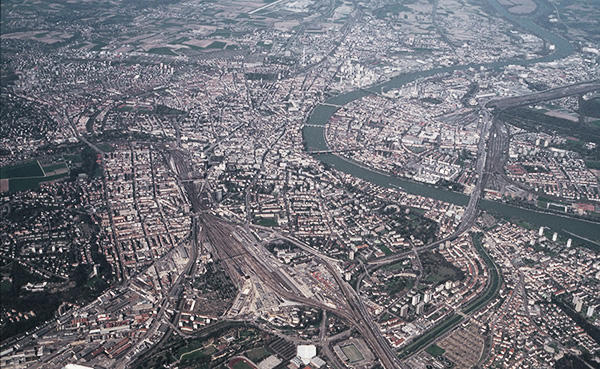The City + Energy I

Investigating the Metabolism of Cities
Contemporary discussion on energy and architecture is largely dictated by the condition of scarcity. We often hear that our city and our buildings are responsible for the consumption of large portion of energy. Due to this condition, in the last years we have witnessed a rising amount of technological innovations and advancements in terms of building materials and technology that would allow for large reduction of buildings energy consumptions and, in certain cases, even for energy production (many have i.e. installed solar panels on the roof of their homes as a way to contribute to the production of renewable energy). Yet, if we look especially at what today is generically called ‘green architecture’, it seems these technical advancements have most of the time not represented an improvement in the quality of the architecture of our city or of our buildings. Rather, many times such innovative projects have generally represented an impasse against the transformation of a certain status quo on the way we inhabit cities. It seems we have applied new technologies to be able to live the same way we got used to, we have placed solar panels on our roofs to be able to consume the same growing amount of energy we are used to, we have find ways to save on the energy necessary to heat our homes to keep up with the heating standards our society got accustomed to. It seems that the recent focus on technological innovations and on the shift from fossil fuels to renewable energy possibly mask an attempt to limit architecture from advancing solutions that would radically question the city’s energetic dependence. As Ivan Illich pointed out in his essay ‘Energy and Equity’ a certain technology is always associated to a certain set of values and cultural patterns that become quickly dominant in every society which applies that technology. In the field of energy, the deployment of new technology, although important in itself, do not represent a change in consumption habits but rather the attempt to make up with growing consumption rates even when the most dangerous and polluting source will be finally banned.
Large availability of cheap energy especially in the second half of the twentieth century, together with a certain belief in the process of modernization, have triggered a radical transformation of our daily life and imposed on us conditions of living we can now very difficultly separate from. In buildings, the results of this is clearly represented by the diffusion of a generic modern architecture where i.e. the traditional climatic intelligence and spatial responsiveness to local “energetic” conditions, that traditionally were always at the origin of typological development, have been overthrown by an undifferentiated, homogeneous and “artificial” space often insensible of those climatic concerns architecture have always tried to intelligently respond to. The current response to the energy problems of architecture (and of its associated energy bill) seems today to be largely based on strategies on how to obtain and maintain those living and spatial standard at a cheaper price (and eventually in a sustainable way) rather than fundamentally questioning whether those standards and way of life make any sense for our contemporary society.
Differently, the current research on energy and architecture (and on energy and the city) is largely dictated by a technical/quantitative approach, aiming on the one hand at defining levels of consumption (see i.e. the recent MIT researchers map on energy use and building material intensity across US cities) and on the other at finding ways to reduce current building energy needs and increase energy production through renewable sources. These researches that are certainly important need yet to be correctly framed and placed within their respective field of competence. The large focus on energy production through renewable sources within the field of architecture represent a shift of attention from issues related to the way energy is consumed to purely quantitative concerns, thus reducing architectural research to the deployment of a given technology.
Studio Basel investigation into the relationship between architecture and energy will on the contrary attempt to reclaim discipline’s instrumentality towards the project of the city and its architecture. The research will assess the meaning of this relationship in order to build up proposals that will reformulate spatial configuration, urban densities and typologies that would allow an innovative understanding of our relationship with energy. Rather than equipping architecture with the latest technology, the research will start by understanding the past and how energy has been central in the development of architecture and the city, in order to project the future. Focusing on the relationship between form and energy, between urban space and energetic process will be the prerequisite for interventions that would perhaps more fundamentally challenge the current society energy addiction in a disciplinary meaningful way.
Introduction

